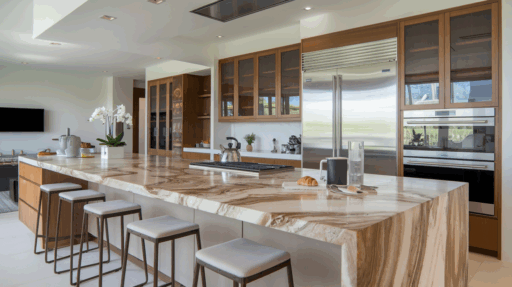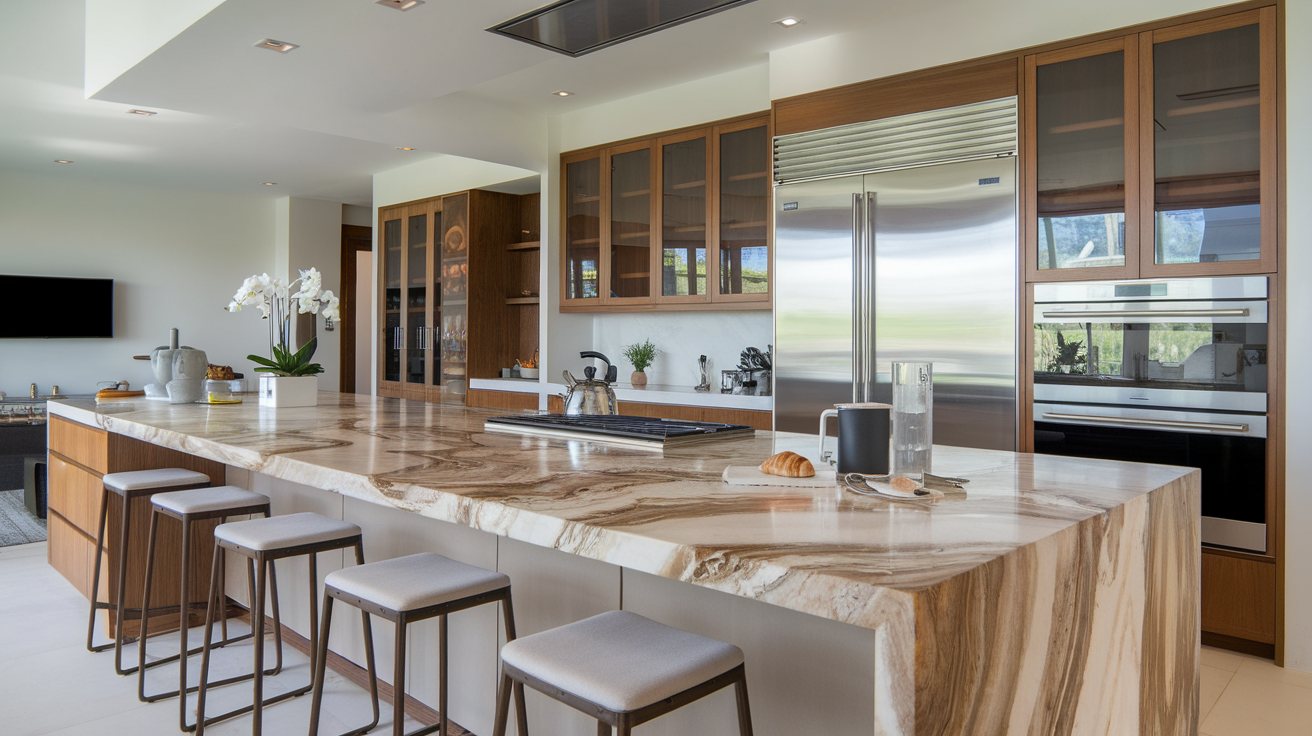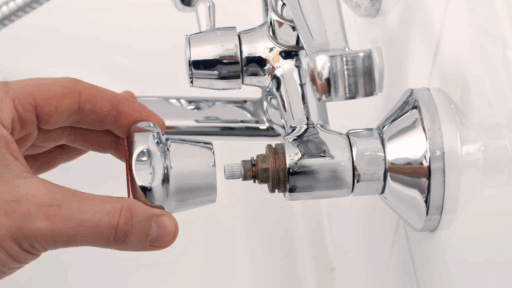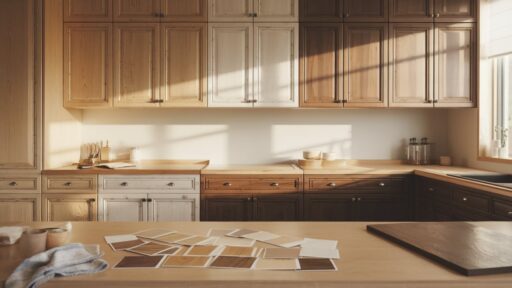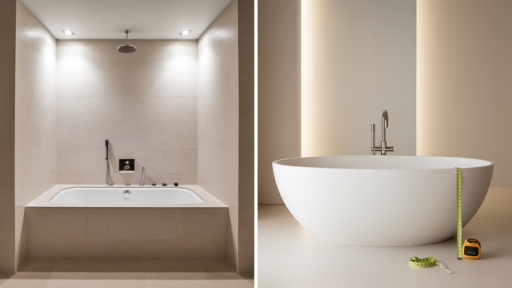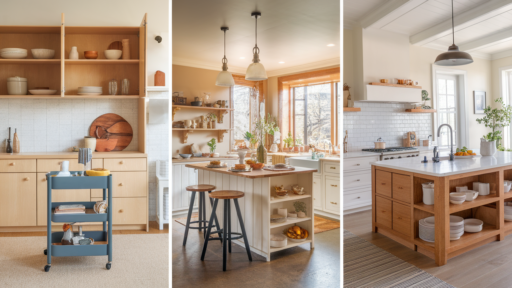Have you ever scrolled through kitchen photos online and paused at those bright white surfaces with those beautiful gray veins? That’s marble – the material that makes kitchens in magazines look so beautiful.
I still remember touching a marble counter for the first time at my friend’s house. It was cool to the touch and looked beautiful, but then I noticed the small stains near the sink.
Marble offers natural beauty that few materials can match, but it comes with some drawbacks, too.
In this blog, you’ll learn:
- What makes marble worth considering
- The real problems marble owners face
- How to figure out if marble fits your life and home
I’ll cut through the sales talk and give you the facts about marble countertops so you can make the best choice for your home.
What Are Marble Kitchen Countertops?
Marble is a natural stone that forms when limestone gets heated and squeezed under the Earth’s surface. This process changes the rock’s structure and creates those pretty veins we all notice first.
You can find marble in many homes, not just in fancy mansions. People use it for kitchen islands, counter spaces, and bathroom vanities. Some even add it to walls and floors.
I’ve seen marble in homes built decades ago and in brand-new houses, too. It’s like that classic white shirt in your closet – it simply doesn’t fall out of fashion.
Why? The stone’s natural patterns make each piece one-of-a-kind.
No two marble slabs look exactly the same. Your counter won’t match your neighbor’s, even if you bought from the same place.
The light color and natural veining bring a clean, bright feel to any room. This is why designers keep using it year after year.
Pros of Marble Countertops
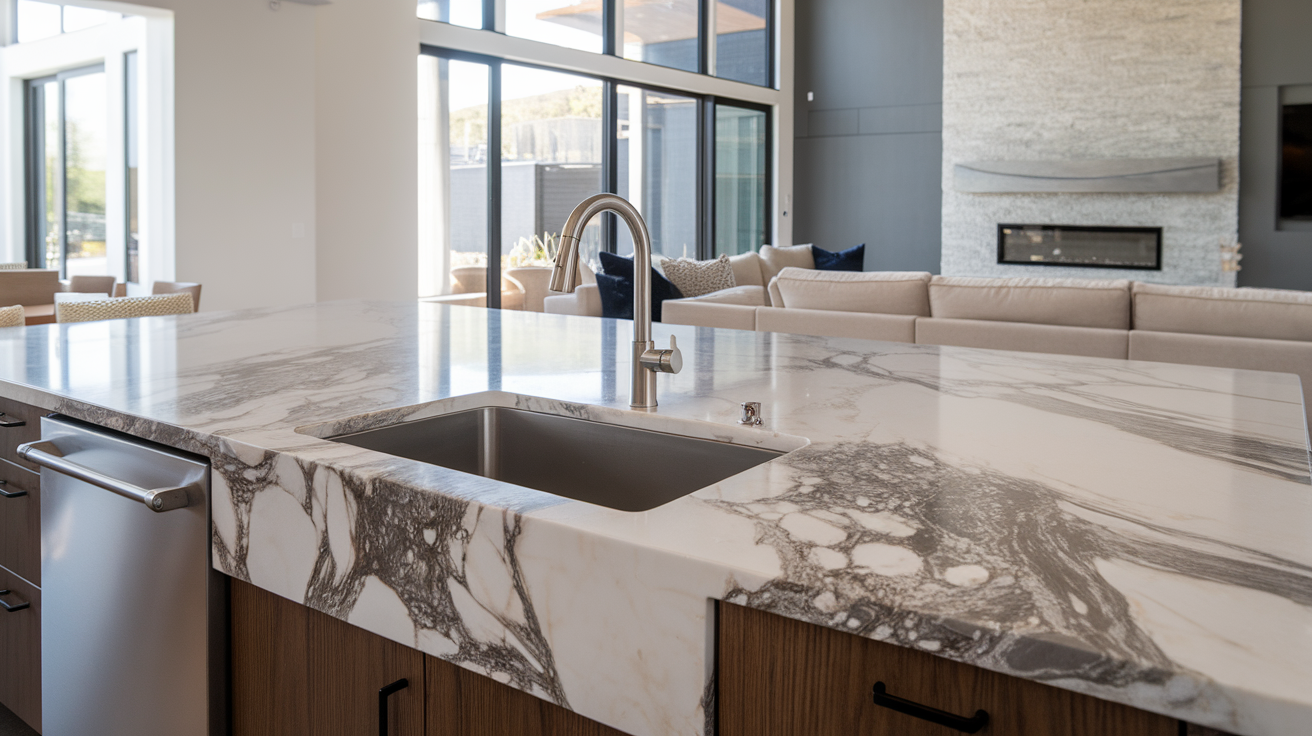
1. Timeless Beauty
Marble has a look that people have loved for hundreds of years. The soft veins that flow through the stone create patterns you can’t find in man-made materials.
I’ve noticed that marble tends to make spaces feel both fancy and homey at the same time. The way light plays on its surface brings a depth that photos can’t fully capture.
Your kitchen will stand out with marble. Its clean, bright look fits with almost any style – from old-fashioned to modern.
2. Cool Surface
Have you ever tried to roll out dough on a warm counter? Not fun. Marble naturally stays about 5-10 degrees cooler than room temperature.
This makes it perfect for baking. Your pie crusts won’t get warm and sticky when you roll them out.
I remember watching my grandmother place her chocolate on a marble slab to keep it from melting while she worked. Pastry chefs pick marble for this exact reason.
3. Heat Resistance
Marble can handle heat better than some other counter options. If you need to set down a hot pot quickly, your marble counter won’t burn or melt.
Just be careful not to make this a habit. While marble can take some heat, extreme temperature changes might still cause damage over time.
You should use trivets for very hot items to keep your counter looking its best for years.
4. Unique Slabs
When you buy marble, you’re getting something truly one-of-a-kind. The Earth made your exact slab over millions of years.
No one else will have the same pattern in their kitchen. The veins, colors, and small details in your counter won’t match any other home.
I find this to be one of marble’s most special qualities. Your kitchen tells a story that started long before humans built houses.
Cons of Marble Countertops
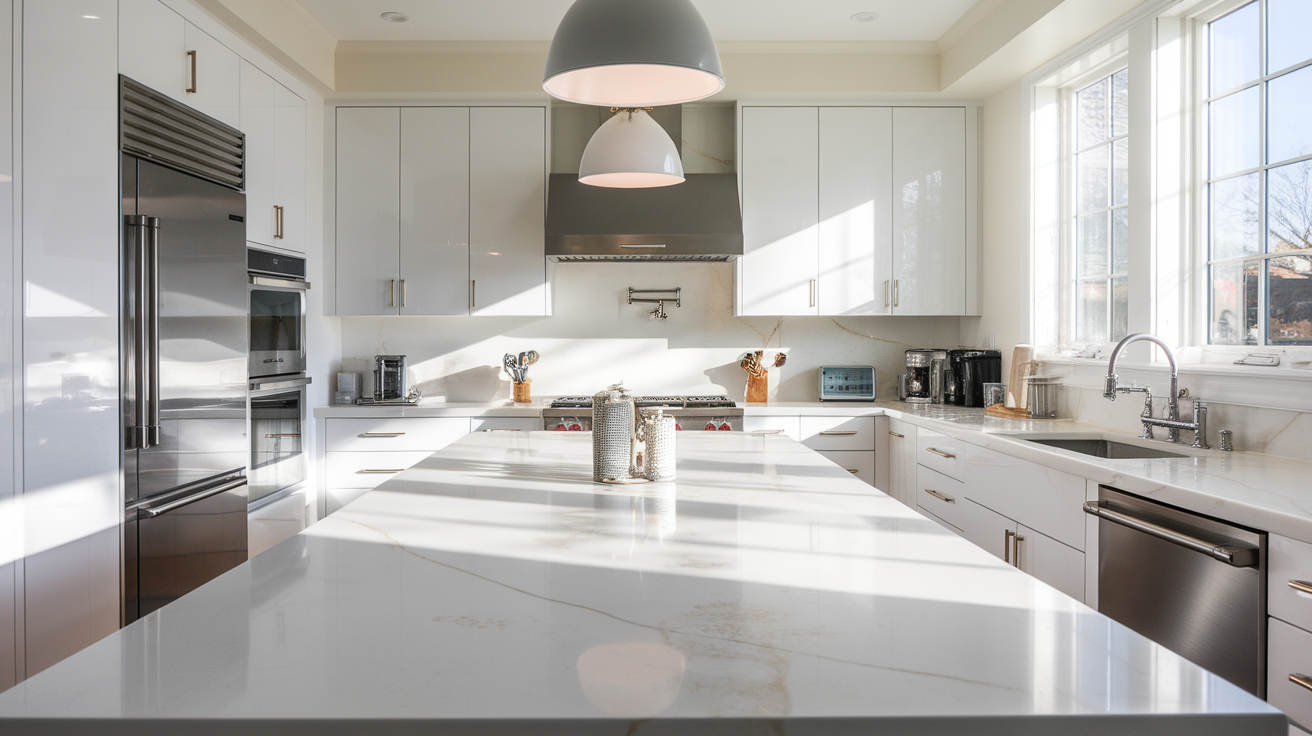
1. Scratches and Etching
Marble is softer than you might think. If you cut directly on it, knives will leave marks that you can’t fix easily.
But the bigger issue is etching. When acidic foods like lemon juice, tomato sauce, or vinegar touch marble, they create dull spots that look like stains. These spots aren’t dirt – they’re actual changes to the stone’s surface.
I learned this the hard way when I left a cut lemon on my counter. The next morning, I found a permanent mark that no amount of cleaning would remove.
2. Staining Risk
Unlike some other stones, marble acts a bit like a sponge. It has tiny holes that can soak up liquids if they sit too long.
Red wine, coffee, olive oil, and even water can sink in and cause stains. These marks might stay forever, even with cleaning.
You need to be quick with spills. I keep a cloth handy at all times in my marble kitchen because waiting even 10 minutes can be too long for some spills.
3. Regular Maintenance
Marble needs more care than most counter options. You’ll need to seal it when it’s installed, and then again every 6-12 months.
The sealer creates a thin layer that gives you time to wipe up spills before they sink in. Without this protection, your marble would stain much faster.
I’ve found that you also need to be careful about cleaning products. Strong cleaners can damage the stone or strip the sealer. Mild soap and water are your best bet for daily cleaning.
4. Higher Cost
Let’s talk money. Marble costs more than many other counter choices – often approximately $40-100 per square foot installed.
The price varies based on the type of marble, where it comes from, and how thick you want it. Rare colors cost even more.
You also need pros to install it correctly. I tried to save money on my installation, and the cheaper company didn’t align the veins properly – now I notice the mismatch every day.
| Pros | Cons |
|---|---|
| Timeless Beauty – Elegant, soft veining, fits any style. | Scratches & Etching – Easily marked by knives and acidic foods. |
| Cool Surface – Naturally cold, perfect for baking tasks. | Staining Risk – Absorbs liquids quickly; spills can leave permanent marks. |
| Heat Resistance – Can handle hot pans briefly without damage. | Regular Maintenance – Needs sealing every 6–12 months; sensitive to cleaners. |
| Unique Slabs – Each piece is one-of-a-kind with natural variation. | Higher Cost – Expensive material and professional installation required. |
Is Marble the Right Choice for Your Kitchen?
Let’s be honest – marble isn’t for everyone. Before spending the money, think about how you really use your kitchen.
Do you cook often? Daily cooking means spills—tomato sauce, wine, coffee—all of which can stain marble. How do you feel about marks and changes? Marble won’t stay “perfect.” Over time, it tells a story through its surface.
Your lifestyle matters too. Do you have time for extra care? Can you wipe spills quickly?
For busy families, marble might bring more stress than joy. My sister switched to quartz after a year because she couldn’t keep up with the upkeep.
Marble is best for people who:
- Love natural beauty over perfection
- Don’t mind maintenance
- Use their kitchen moderately
- Accept a changing surface over time
If you want low-maintenance counters that stay the same for decades, try granite or quartz. But if you’re drawn to marble’s natural charm and don’t mind its quirks, it could be a great fit.
Types of White Marble Countertops
When shopping for white marble, you’ll find several types with different looks and price points. Let’s see what to know about the most common ones:
1. Carrara Marble

This Italian marble is what most people picture when they think of white marble. It has a light gray background with soft, feathery gray veins running through it.
I’ve seen Carrara in kitchens around the world. It’s the most common and often the most budget-friendly of the white marbles.
You can spot Carrara by its subtle, gentle patterns that don’t stand out too boldly. The veins tend to be thin and linear rather than thick or swirly.
If you want the marble look without spending a fortune, Carrara is your friend. It typically costs approx. $75-125 per square foot installed, making it more within reach for many homes.
2. Calacatta Marble
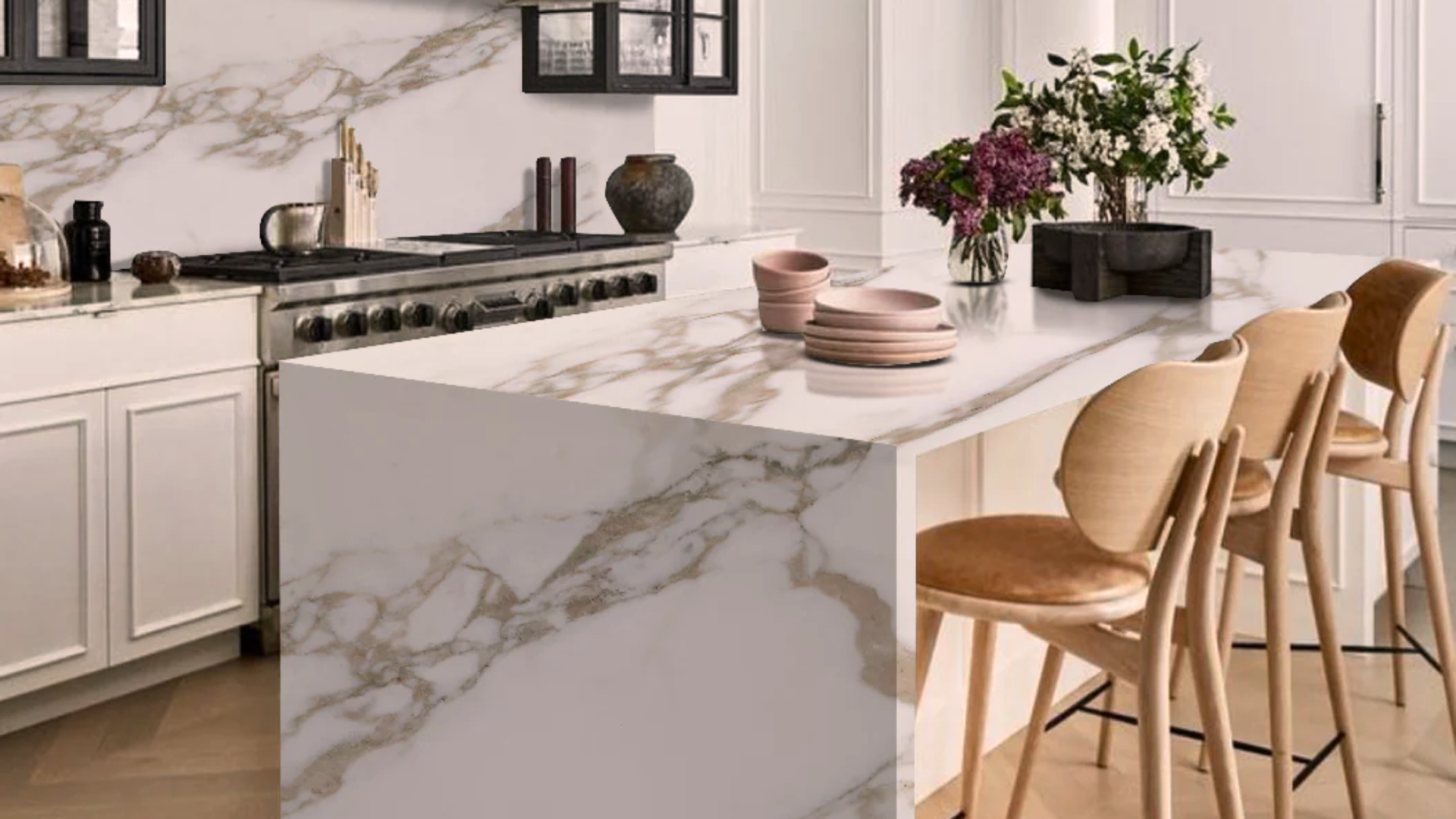
Don’t confuse Calacatta with Carrara! Though both come from Italy, Calacatta has a whiter background and bigger, more dramatic veins that can range from gray to gold to brown.
The patterns in Calacatta are often thicker and more spread out. This gives your counter more empty white space between the veins.
I once helped a friend pick between these two, and the simple way to remember: Calacatta makes a bolder statement in your kitchen.
This showier look comes with a higher price tag – often about $150-250 per square foot installed. It’s less common than Carrara, which adds to its special appeal.
3. Statuario Marble

Statuario is the star of white marbles. It has the brightest white background with striking, bold gray or gold veins that stand out clearly.
Famous sculptors like Michelangelo chose Statuario for their masterpieces because of its pure white color and striking patterns.
You’ll pay a premium for this marble – sometimes approx. $200-300+ per square foot installed. It’s harder to find and often has waiting lists at stone yards.
The bright white of Statuario will make your kitchen feel extra bright and clean. If you want a counter that guests notice right away, this is it.
4. Danby Marble

Unlike the Italian options above, Danby comes from Vermont in the USA. This local option has a warm white color with gentle veining in gray or gold.
What makes Danby special? It’s less porous than many other marbles, which means it resists staining better.
I’ve found that American marble often costs less to ship within the US, which can save you money on the total project.
The look is somewhere between Carrara and Calacatta – not as subtle as Carrara but not as bold as Calacatta. It’s a nice middle option that works well in many homes.
Caring for Marble Countertops
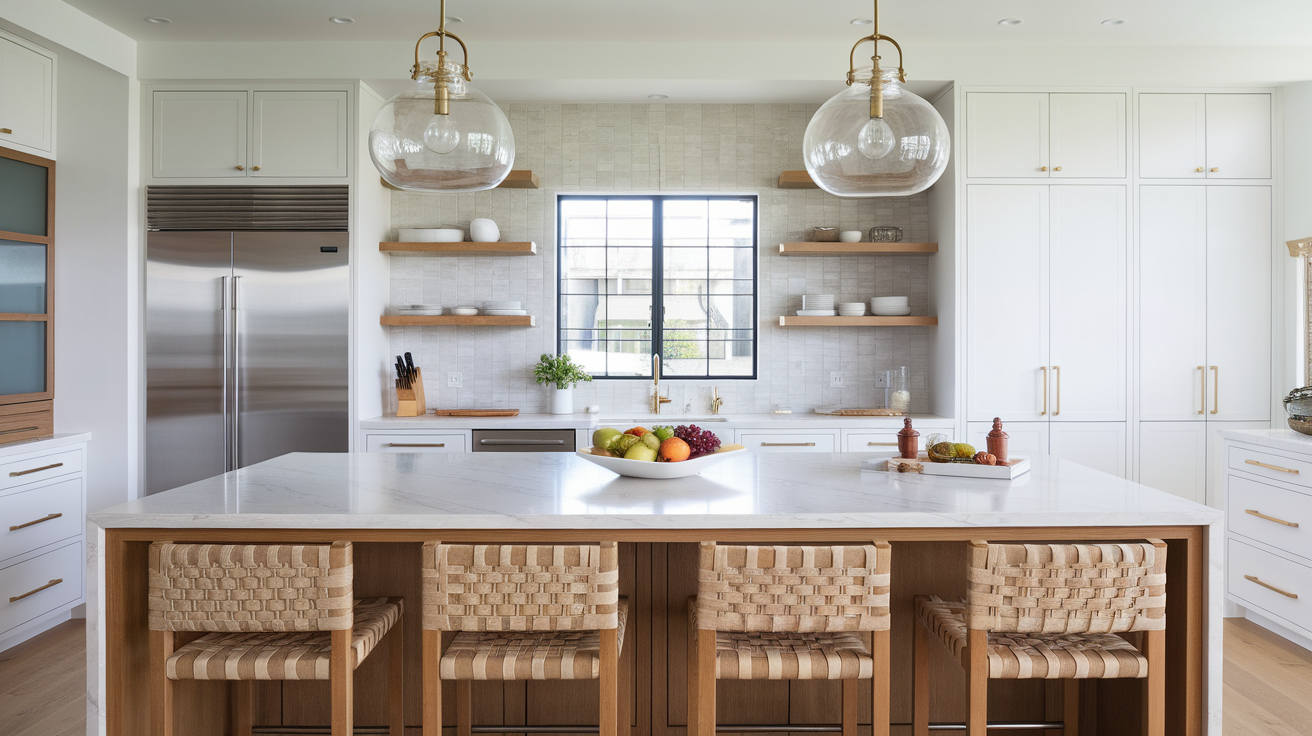
- Use a Gentle Cleaner Daily: Wipe surfaces with a soft cloth and a pH-neutral cleaner or mild dish soap mixed with warm water. Avoid acidic or harsh cleaners – they can dull or etch the marble.
- Wipe Spills Immediately: Marble soaks up liquids quickly. Clean up spills right away, especially acidic ones like lemon juice, vinegar, wine, or tomato sauce.
- Seal the Surface Regularly: Apply a marble sealer every 6 to 12 months to reduce stain risk. Sealing doesn’t make marble bulletproof, but it adds a layer of protection.
- Use Cutting Boards and Trivets: Never cut directly on marble, as it can scratch. Place hot pans on trivets to avoid heat damage or discoloration.
- Avoid Harsh or Abrasive Products: Skip bleach, ammonia, or anything gritty. These products can break down the sealant and damage the finish.
- Clean Gently After Use: For sticky spots or messes, use a soft sponge, not a scouring pad. Buff dry with a microfiber towel to avoid water marks.
With good habits, your marble can stay beautiful for many years, even with daily use.
Conclusion
Marble countertops offer beauty that few materials can match. The unique patterns and cool-to-the-touch surface make them special. But they also scratch, stain, and need regular care.
Is marble worth it? That depends on you.
I believe marble works best for people who value natural beauty over perfect looks. If you cook often or have young kids, you might find the upkeep frustrating.
Your budget matters too. Marble costs more upfront and needs ongoing care.
In the end, no counter is perfect. Some people love the way marble ages, seeing each mark as part of their home’s story.
Think about how you really live in your kitchen. If you can embrace some wear and give marble the care it needs, you might join the many homeowners who feel the beauty is worth the extra effort.

